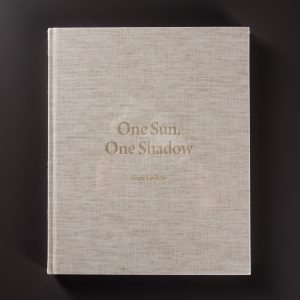Lithuanian photography. The second word of this phrase is much more familiar to the world than the name of the North-Eastern European country with a complex historical destiny. After all, photography appeared in Lithuania just half a year later than in France - the First and Second World Wars, exiles, deportations, partisan movements, Soviet occupation led to its rapid development and expansion.
Those who lived east of the Iron Curtain after the Second World War still remember and are well aware of Lithuanian photography and the ambivalent term "Lithuanian School of Photography" that defines it. You will find names such as Antanas Sutkus, AlgimantasiKunčius, Aleksandras Macijauskas, Romualdas Rakauskas and many others in most of the texts and collections of famous Russian photo critics. Although the books of photographers and theoreticians who changed the history of photography hardly reached Lithuania at that time, the connection with the West was not completely lost, mainly through Czech and Polish photojournals. Examining the photography of that time and the stories of those who created it, it is possible to identify the exhibition "Human Family" curated by such photographers as Cartier-Bresson, Adget, Brassai, Magnum group, R. Frank, L. Freed, J. Karsh, P..Strand and E. Steichen influence. Lithuanian photography of the 7th-8th century can be defined as social-documentary, the epicenter of which is man. Lithuania was not overtaken by the wave of humanist photography and here it mostly developed in an ethnographic direction. Strongly influenced by lyricism and psychological representation, combining journalistic and artistic strategies, photographers captured their nation, village, work, and public life.
The 1990s brought changes not only in the political field, but also in the field of photography. The new generation, judging from today's perspective, has radically changed the perception of photography - we could not fit it into the framework of the "decisive moment" principle. No suspended moments, but fragmentation of space, practice of "wrong" angles, drawing, conscious failure, everyday household details, photographic meditation, emptiness, more or less veiled mockery directed both at the era and at prevailing photography. There is no person here, and if he appears, he is never important per se. When blending with the environment or interior, it is equal or even inferior to all other details. More precisely, it turns into photographic noise, the presence of which is usually implied, sensed, rather than directly experienced. The photographic space is given over to things and to the seemingly insignificant environment. As much as possible, the new generation denied the canons of the metaphorical school of Lithuanian photography and drew a new line of discursive photography. Art critic, art researcher Agnė Narušytė defined the work of this generation with the term Boredom aesthetics, which through various philosophical and photographic science categories quite accurately describes Lithuanian photography of the 1980s.
in 1990 After Lithuania regained its independence, the photography situation changed fundamentally. New art legitimating institutions are being created, Soviet control mechanisms are disappearing, monopolies of "correct" art production are collapsing. The advertising photography market is gradually forming, a network of photo laboratories is found and expanded, the first digital cameras appear, academic structures and their culture are formed. Photography is no longer a closed medium for "photo artists" - global contemporary art projects influence the processes taking place in Lithuania and vice versa. More and more often, Lithuanian artists participate in large-scale commissioned art projects in Europe and beyond, are invited to important art centers, and receive important evaluations, such as in 2009. Arles Discovery Award to Rimaldus Vikšraić, presented by Martin Parr.
This is how the 20th anniversary of independent Lithuania raised a new generation of photographers. The authors presented in this publication are not of the same age, but they are united no longer by artistic opposition to the system, government control, ideological nonsense, but by the actualities and reality of the 21st century. This generation not only lives in a global world, but also thinks and creates globally. Some of them live in New York, London, others reside in Europe or South America. Many of them are already established in different art markets and territories. Some are at the peak of the demand curve, others, perhaps, on the way to it. And although it is possible to see themes connecting their work, solutions of expression that are characteristic of all contemporary art, but there are several categories that are characteristic of all eleven authors. This is young, modern, professional, global and legitimized Lithuanian photography.
This selection is one of many possible glimpses into the young generation of contemporary Lithuanian photography, an opinion without a full stop...
Katie D





